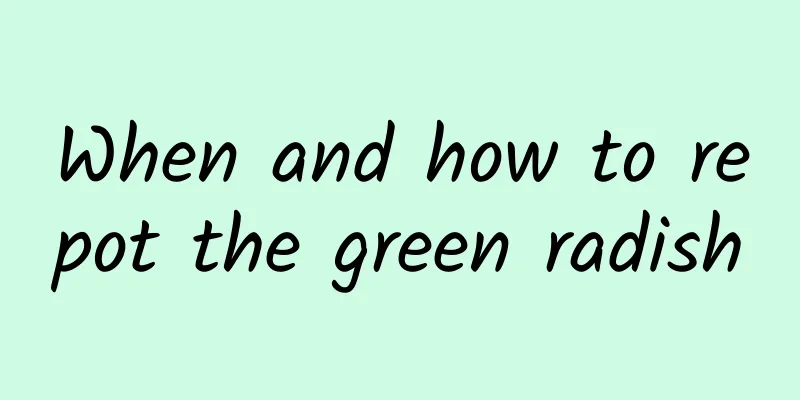Management techniques for pear trees in July

|
As a perennial fruit tree, pear trees usually begin to bear fruit four years after planting. The ripening time of different varieties of pears varies slightly, but most begin to bear fruit in June. The following July and August are the critical period for the rapid expansion of the fruit. The fruit matures in September and can be picked when the skin turns yellow. During the three-month fruit-bearing period, proper maintenance is crucial to improving fruit quality and yield, which is directly related to the economic benefits of fruit farmers. Today, let’s learn about the management techniques of pear trees in July. 1. Branch management For new shoots that have not opened in spring, use an angle opener to adjust them to above 70° to promote the formation of axillary flower buds. Flat trellis pear trees may produce a large number of upright new shoots in summer, which need to be handled in time, pinched or pruned to maintain the tree shape and growth balance. 2. Soil, fertilizer and water management Pear orchards in arid northern regions require timely irrigation to support fruit enlargement. During the rainy season in the south, attention should be paid to drainage to prevent the fruit from cracking. Before harvesting early-ripening pears, the amount of fertilizer and water should be controlled, nitrogen fertilizer should be reduced, and the sugar content should be increased. For mid- and late-ripening pears, high-potassium compound fertilizer should be applied in a timely manner according to the soil and fertilization conditions. Young trees do not need additional fertilizer in summer when there is sufficient base fertilizer and top dressing. Grassy pear orchards should be mowed and covered to maintain soil moisture and fertility. 3. Fruit management and harvesting Early-maturing pears in the south begin to mature from mid-June, and early picking should be avoided to ensure the quality of the fruit. In high temperature seasons, sunburn may occur on the fruit, and measures such as spraying water and covering should be taken to cool it down. For coloring pear varieties, bagging technology and water spraying can be combined to promote coloring. 4. Pest and disease control The types of pear tree diseases and pests vary from region to region, but common pests in summer include pear borer and aphids, and diseases include black spot and anthracnose. Due to the impact of early leaf fall disease last year, the southern pear producing areas need to strengthen pesticide control during the rainy season. V. Countermeasures for Meteorological Disasters In summer, pear orchards may suffer from hailstorms, typhoons, and waterlogging, so you need to pay attention to weather forecasts and take preventive measures. After the disaster occurs, the pear orchard should be cleaned up in time, the trees should be trimmed, pesticides should be sprayed to kill bacteria, and the soil should be loosened and fertilized to restore the tree vigor. In summary, July is a crucial stage for pear tree management , involving many aspects such as branch management, soil, fertilizer and water management, fruit management and harvesting, disease and pest control, and countermeasures to meteorological disasters.
|
<<: How to deal with freshly picked golden cherry
>>: How to grow pineapple heads? How long does it take to grow pineapples?
Recommend
How often should I water Milan? Should I water it frequently?
How often should Milan be watered? Milan likes mo...
How to water Hawaiian bamboo
Hawaiian Bamboo Watering Tips Hawaiian bamboo is ...
How to propagate zebra aloe, if you do it now, it will survive!
Propagation by division Division can be done at a...
Are all the flowers in your house dead? Don't throw it away, one trick to save it and make it grow!
Rose European roses, mini roses, small roses...th...
Why can't mountain turtles be planted at home? Feng Shui theory
Mountain turtle is also called ground turtle, gol...
When is the best time to take cuttings of chrysanthemums?
Best time for cutting chrysanthemums Chrysanthemu...
How to plant pepper seeds?
Chili pepper is a common condiment in life, so in...
Disease control of hibiscus
Hibiscus sooty mold The occurrence of sooty mold ...
What to do if Frost Morning withers
1. Caused by long-term lack of watering If you do...
Can soy milk be used to water flowers?
Nowadays, more and more people like to grow flowe...
Is Fuchsia a shade-loving or sun-loving plant?
Does Fuchsia prefer shade or sun? Fuchsia is a pl...
How many years does it take for grape vines to bear fruit?
Grapevine is a perennial vine that can live a ver...
How to grow alum root, alum root pictures
1. How to grow alum root 1. Light: Alumroot likes...
How to grow potted crabapples
1. Suitable potting soil When caring for the plan...
What does geranium do?
You can watch This is the basic function of flowe...









